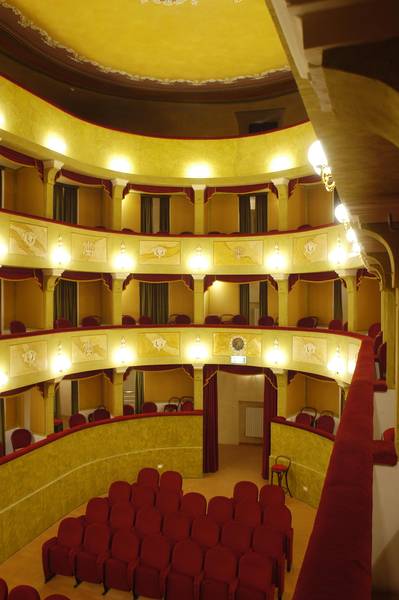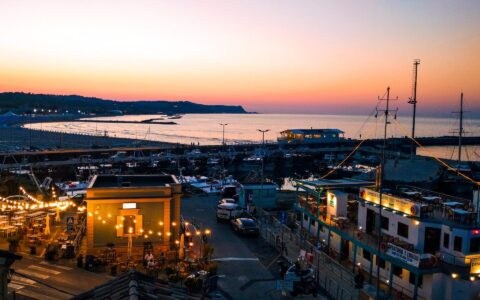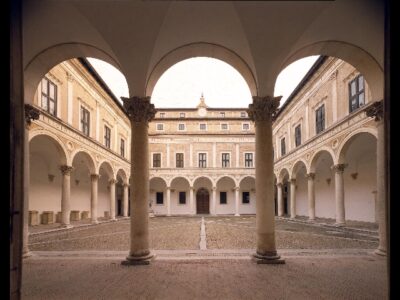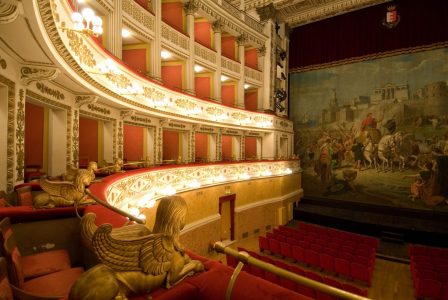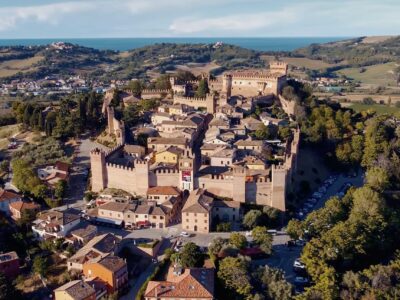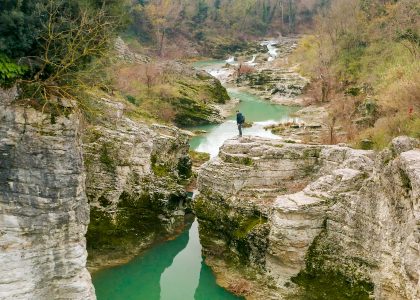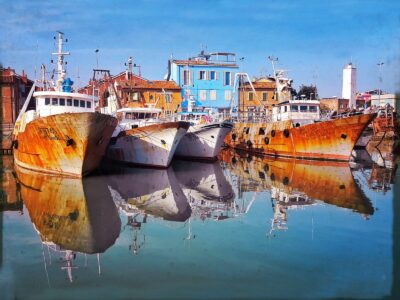Theaters
The artistic and cultural history of Fano and the province of Pesaro and Urbino testifies to a fervent and passionate activity that has made the region a privileged place for the birth of celebrated artists. Artists like the stage and set designer Giacomo Torelli, born in Fano, who worked for a long time in Paris at the court of the Sun King. Or of the great Gioachino Rossini, a genius who proves the existence of an environment articulated in places where the spectacle was a source of inspiration and life, and which even today has been able to keep such richness unchanged in its tradition.
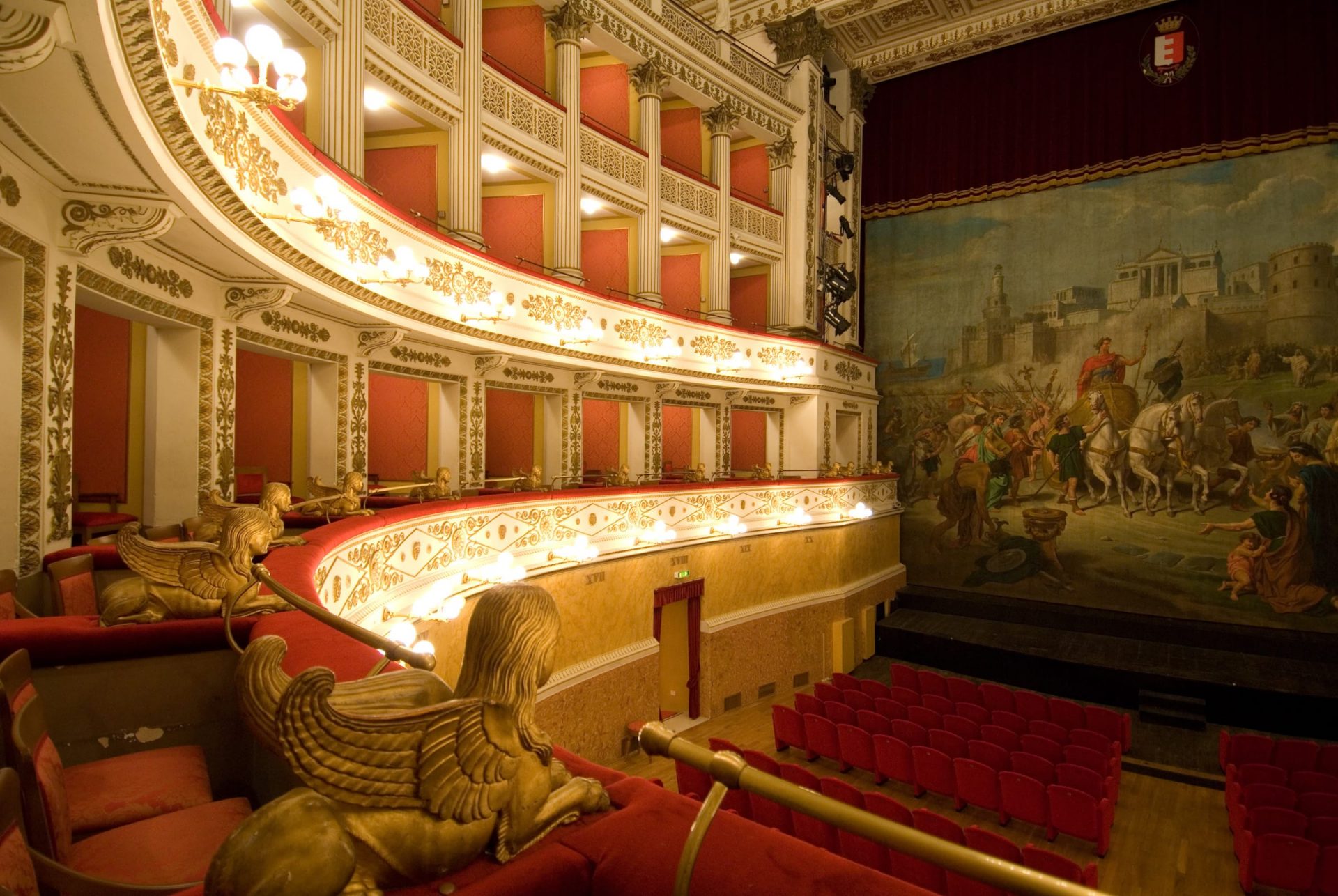
Theaters in the province of Pesaro and Urbino
Among the theaters in operation in the province of Pesaro and Urbino are the two largest historic theaters in the Marche: the Fano and Pesaro theaters.
Originally built in 1665 by the celebrated stage and set designer Giacomo Torelli, the Fano Theater, the Teatro della Fortuna, was rebuilt in the mid-19th century in its present structure by architect Luigi Poletti. A second inauguration, following the Polettian inauguration in 1863, took place in April 1998: the theater was returned to the city in its splendor after a long period of restoration due to damage sustained in World War II. The interior of the theater (900 seats), in neoclassical style, is an innovative reference for the language of mid-nineteenth-century theater spaces. Poletti succeeded, in fact, in giving the classic beehive typology of Italian-style theater an unprecedented and refined lightness.
Rossini Theater
In Pesaro, Teatro Rossini has retained a capacity of 872 seats. The interior has excellent acoustics which allows special performances to take place. The Teatro Rossini was designed by Pietro Ghinelli and opened in 1818 with Rossini’s opera “La Gazza Ladra.”
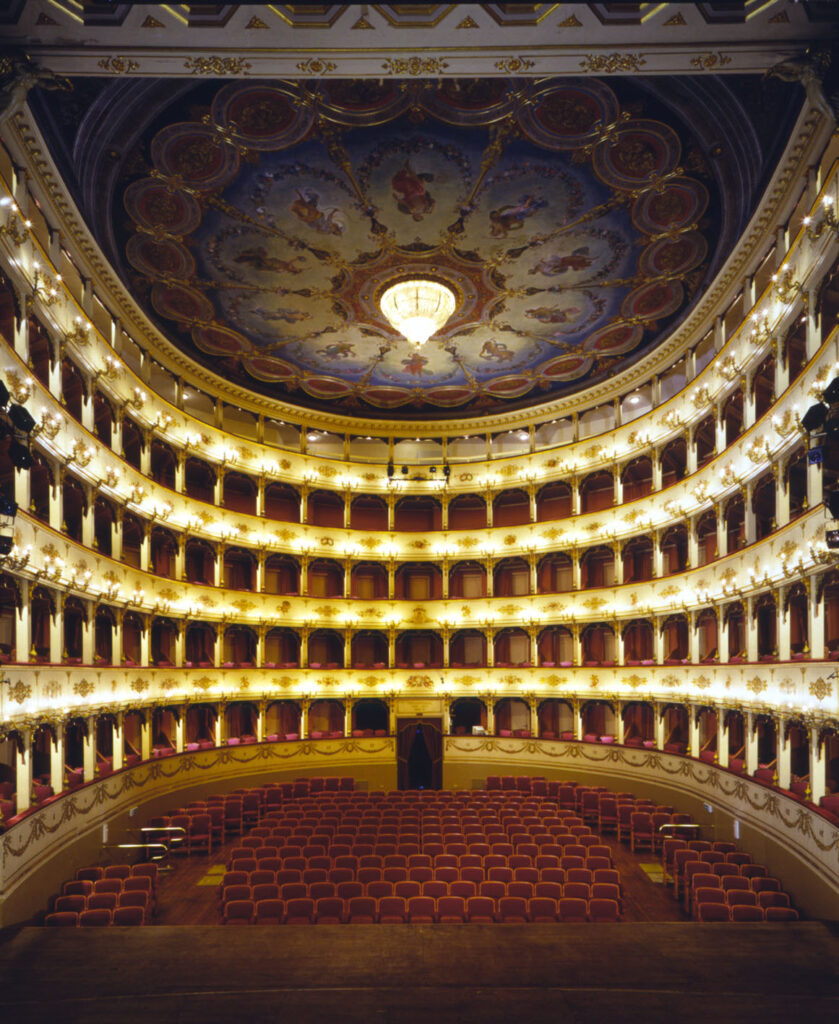
Municipal Theater of Cagli
Also exemplary are the eclectic late 19th-century decorations that characterize Cagli’s Municipal Theater. The elegant bayed atrium leads to the richly historiated hall. The stage still retains the old maneuvering devices for the wings, a salt solution light machine, as well as part of the original stage equipment.
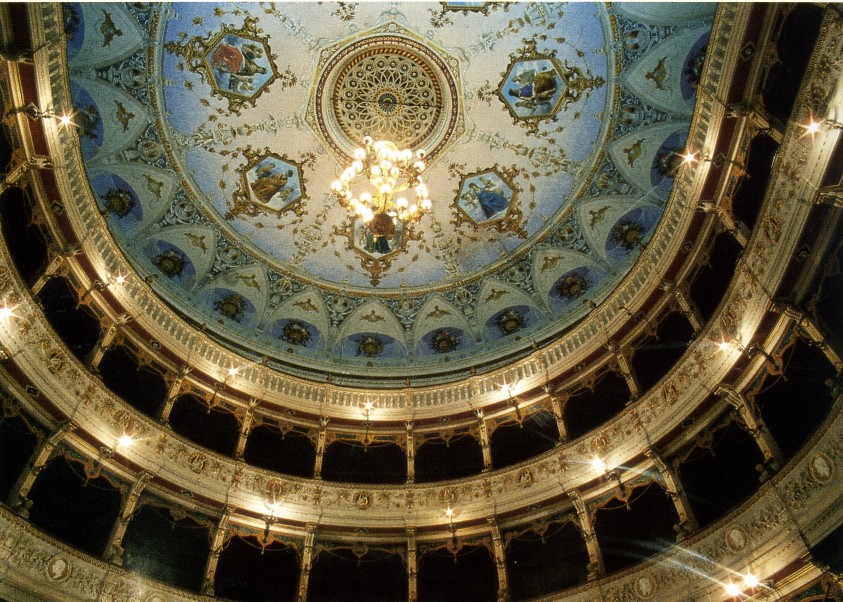
Concordia Theater
In San Costanzo, the activity of the Teatro della Concordia is documented from 1757. The Theater was carved out of the residential wing of the imposing keep, erected in the 15th century to protect the northeastern apex of the castle. In 1935, the inner hall lost its original decoration, but retained the classic type of historic theaters.
Theater of Trionfo
Also worth visiting is the Triumph Theater in Cartoceto, land of olive trees, built between 1725 and 1730 in a former olive storehouse itself. The small hall is decorated simply with ribbons and scrolls, and the theater, now among the many “silent” ones in Le Marche, is a place of special charm.
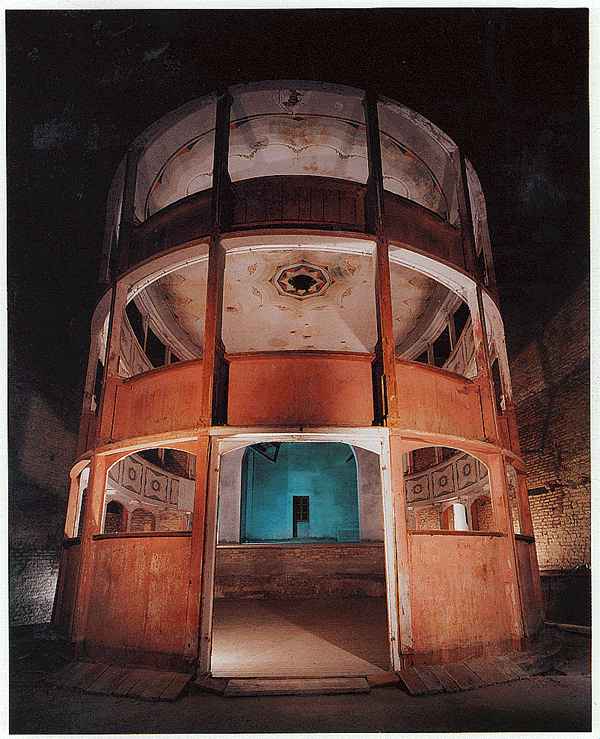
Sanzio Theater
In Urbino, before the present theater, a stable structure intended for performances was the Teatro dei Pascolini, erected by the Academy of the same name in 1683.
It was dismantled after the new theater, erected between 1840 and 1853, came into operation on the area above the 15th-century keep that dominates the Mercatale area and encloses the famous Ramp by Francesco di Giorgio Martini.
The construction of the theater was accompanied by a real urban planning operation, carried out by Senigallian architect Vincenzo Ghinelli, a genuine expert in theater construction.
The facade, is a typical creation of late neoclassicism of which Ghinelli was a faithful follower.
The hall, more than for the traditional horseshoe arrangement of the three tiers of boxes and the gallery-like gallery gallery above, it is to be remembered for the surviving pictorial decoration of the vault, the work of Raffaele Antonioli of Gubbio. These decorations impart a character of joyful festivity to the room, especially with the images of the nine Muses, placed in a circle in their respective compartments. Lost, however, are the decorations of the banded balustrades of the boxes, of which nineteen roundels with the effigies of illustrious figures, first and foremost Raphael Sanzio to whom the theater had been and still is dedicated. These decorations were obliterated and partly removed during the last renovation, completed in 1982 by architect Giancarlo De Carlo: a renovation that also led to a radical modification of the atrium, the overlying ridotto and adjacent spaces.
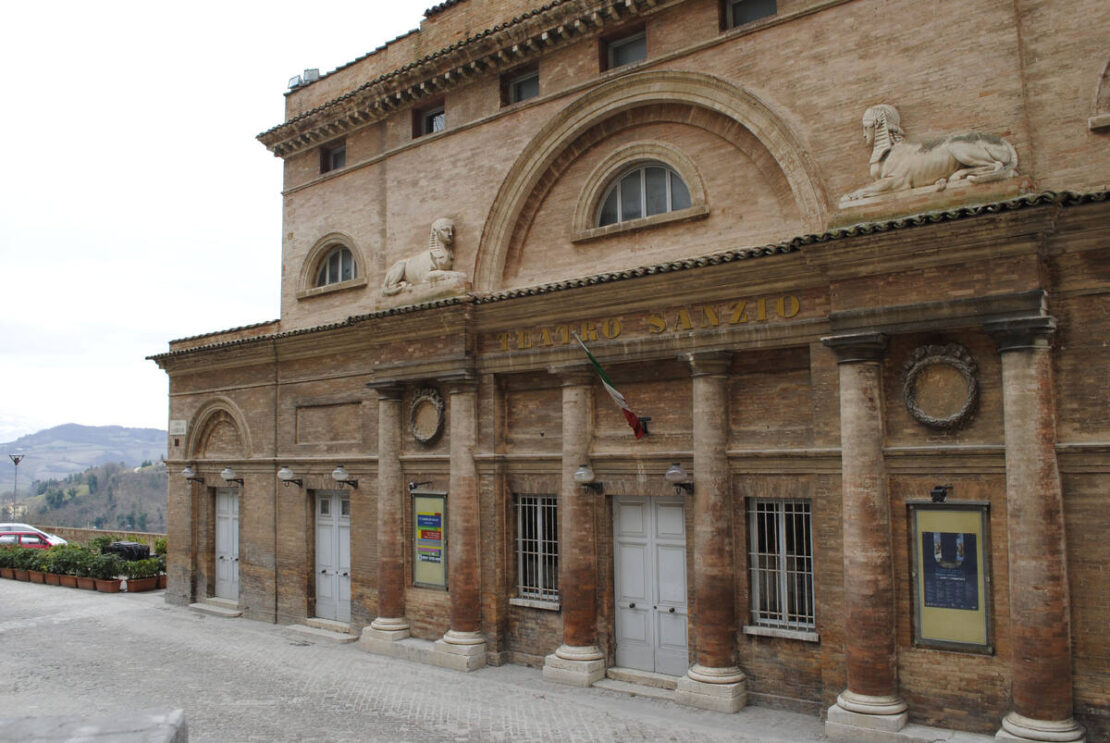
Bramante Theater
In Urbania, shortly after the Unification of Italy, with Giuseppe Verdi’s Il Trovatore, a new theater was inaugurated in 1864, which was named after the illustrious fellow citizen Donato Bramante. Romolo Liverani from Faenza, of romantic sensibilities, painted the scenes of the wings and the curtain with a view of Piazza San Cristoforo. The painter Lancisi da Sant’Arcangelo created the medallions in the ceiling showing the four elements (air, earth, water and fire) relived through an elegant mythology. Pietro Gai from Pesaro modeled the busts of Donato Bramante and that Girolamo Crescentini whose voice delighted the audiences of Napoleonic Europe. Also by Gai are the gilded friezes around the medallions, depicting Renaissance and Risorgimento figures connected to the city’s history: Francesco Maria II Della Rovere, Bramante, Raphael, Girolamo Crescentini, Filippo Ugolini, Rossini and Verdi.
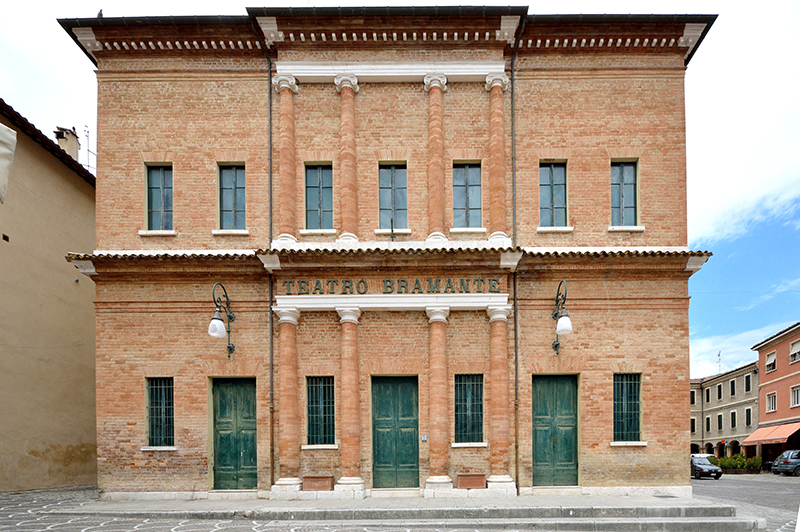
Theater of the Rocca
In Sassocorvaro, the Theater was created inside the famous Rocca designed by Francesco di Giorgio Martini, occupying the space of what was once the building’s main hall. Only after 1860, when the fortress became part of the municipal property, did the theater become public. Unlike most theaters of the time, this one does not have boxes, but only a wooden box that extends over the two long sides of the hall with a balcony. The whole was richly decorated in 1895 by Sassocorvarese painter Enrico Mancini (1867-1917) following a style with a clear neoclassical imprint, a classicism nevertheless contaminated with typically Art Nouveau elements. A real gem!
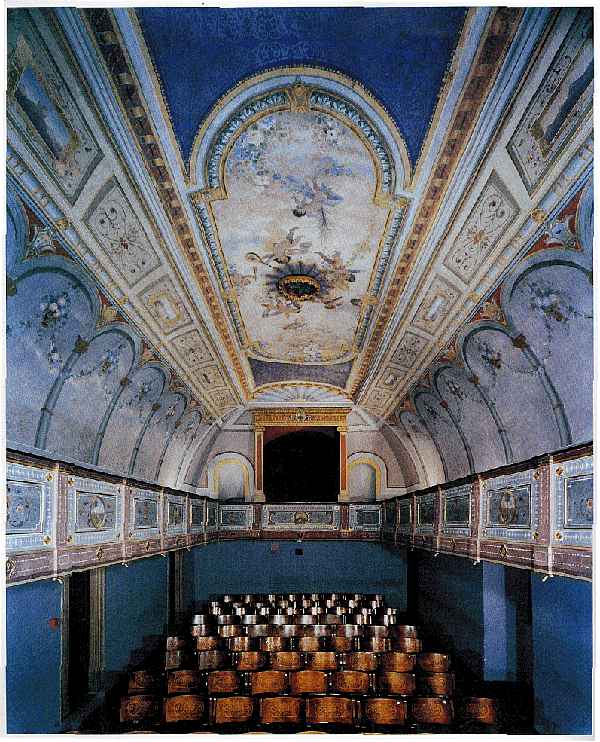
Theater Apollo of Mondavio
Of late 18th-century origins and carved out of the pre-existing former church dedicated to St. Philip Neri, Mondavio’s Apollo Theater, completely renovated in 1887 is of its kind, an authentic jewel that recent restoration has returned to its former glory.
Initially run by the Theater Academy, it was particularly active in the 1800s and the first half of the 1900s.
Remarkable for the harmony of space and the elegance of the floral decorations with festoons, acanthus racemes and grotesques, enhanced by the beautiful veil ceiling with dancing putti in a circle around Apollo. Today, the theater has regained its important cultural and social function not only within the Mondavian community.
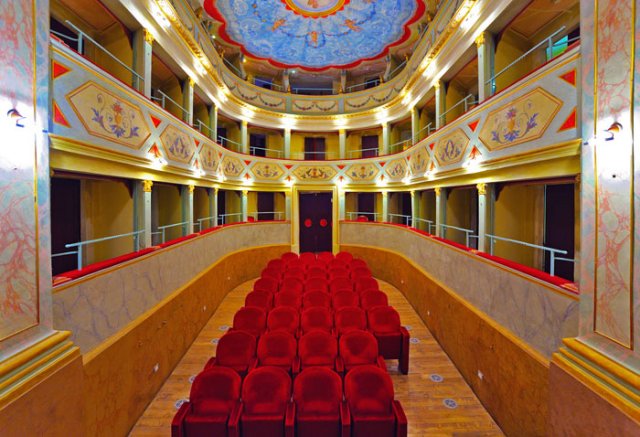
Mario Tiberini Theater
In San Lorenzo in Campo, the Mario Tiberini Theater, is located in the Della Rovere palace, formerly the Town Hall oh the XVI century, belonging to the Della Rovere Castle, with seventeenth-century superstructures (there is a coat of arms of Card. Giulio della Rovere); it was given to the municipality by Marquis Ippolito. It was originally titled “Triumph” Theater and was supposedly made out of the Della Rovere ballroom. Among the historical records of 1813-1814 in San Lorenzo in Campo there were deep disagreements between those who wanted the work to be carried out and those who opposed it for fear of damaging the structure of the palace. Following the restoration of the theater in the year 1981, it was named after the famous fellow citizen Mario Tiberini, a tenor greatly appreciated by Giuseppe Verdi.
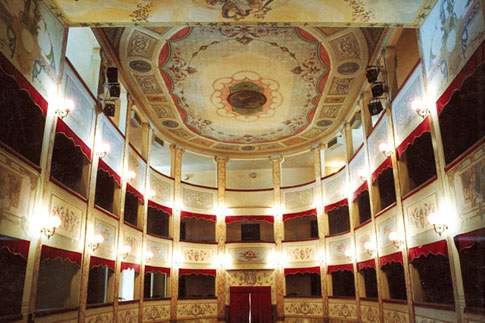
Theater Angel dal Foco
Pergola can boast an ancient theatrical tradition. The Accademia degli Immaturi organized shows and performances in the ancient Palazzo della Comunità, equipped with prestigious sets by Francesco and Ferdinando Bibiena. In 1752, with the elevation of Pergola to the rank of city, at the behest of Pope Benedict XIV, it was decided to endow the center with a new structure. The work took place between 1754 and 1758, by the Bolognese architect Raimondo Compagnini, who used Giuseppe Torreggiani and the Pergolese Giovan Francesco Ferri for the scenic equipment.
The hall still has the original physiognomy given to it by Compagnini: a U-shaped plan (believed by some to be the first in Italy), surrounded by three tiers of boxes (44 in total), with an open balcony gallery. Initially called “della Luna,” with the unification of Italy the theater was renamed “Angel dal Foco,” in honor of the famous condottiere and captain of fortune who lived at the turn of the 14th and 15th centuries. For more than two centuries the theater has operated continuously. The structure began its decline in the early postwar period, when it was occupied by evacuees and stripped of all its furnishings and scenery, including the curtain. Left in a state of complete neglect for decades, so much so that it suffered a partial roof collapse in 1981, after extensive restoration, it finally came back to life in 2002.
